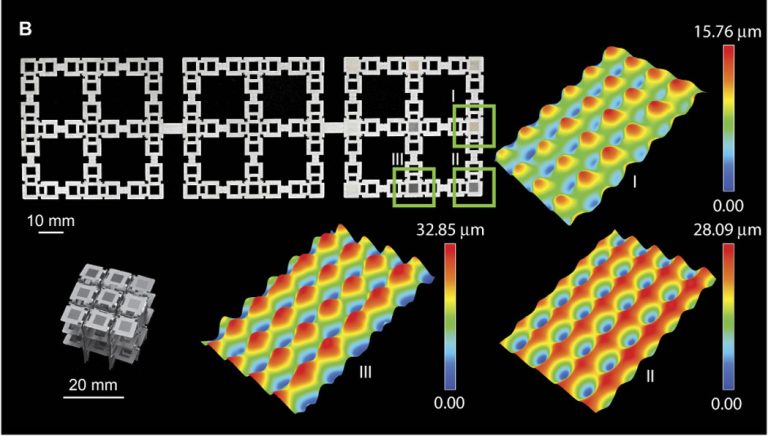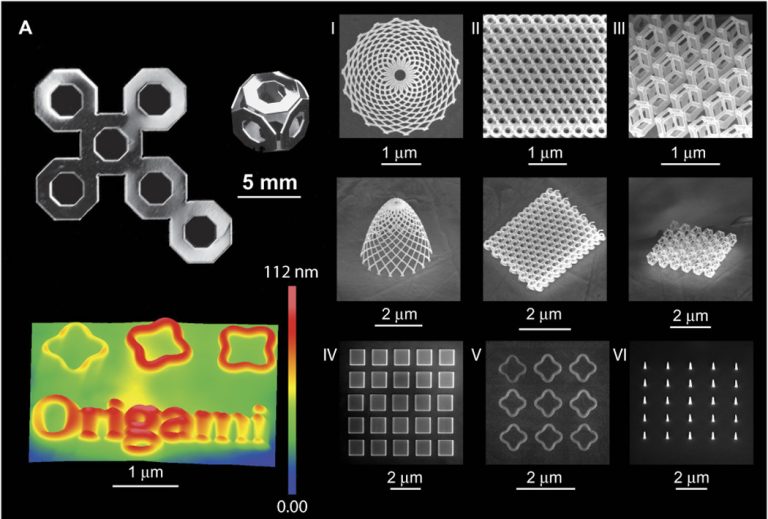How to combine porous structures with the nanoscale surface structures that bone cells are so fond of? Professor Amir Zadpoor’s group chose origami as their key technology. They published their results in Science Advances last week.
Zadpoor is a materials scientist at the 3mE Faculty who produces porous biomaterials for implants. Open materials allow bone cells to grow within the 3D printed prosthesis – a technology that makes it possible to produce tailor-made implants for individual patients. In an earlier article, Zadpoor and LUMC orthopaedic surgeon Sander Dijkstra explain that 3D-printed prostheses are currently exceptions to the rule of standard solutions, and are reserved for young people with bone cancers.

Research has shown that surface patterns on implants can stimulate the growth of bony tissue. Presumably, stem cells attached to surface of nano-patterned materials become bone-making cells because the nanopatterns resemble the surface features of natural bone tissue. The nanopatterns consist of ridges with a height of only a tens of nanometres (millionths of a millimetre). One way of making such structures is with lithography techniques, the same technology that underlies electronic chipmaking. But that only works on flat materials, and not on porous and intricate 3D structures.
 Three categories of folding materials (Photo: TU Delft)
Three categories of folding materials (Photo: TU Delft)In their latest publication in Science Advances, Professor Zadpoor’s group with lead author Dr. Shahram Janbaz showed the elegant combination of flat surface processing and using origami to fold the material into porous structures. The researchers developed three basic categories of space-filling cellular structures and their folding patterns. This resulted in exceptional macroscopic meta-materials (in the order of centimetres) with controlled surface microstructures (on to the nanometre scale) and high porosity. What’s more, the material was self-folding and it could be triggered to transform from 2D to 3D by a change in temperature.

Although the original idea was to make bone-compatible biomaterials, other applications will undoubtedly emerge. The unprecedented combination of physical properties (porous, light, shock-absorbing) and surface-driven functionalities also gives rise to materials with integrated flexible electronics (sensors and actuators) and whatever else you can imagine. The technology of self-folding metamaterials has only just emerged.
- Shahram Janbaz, Niels Noordzij, Amir. A. Zadpoor e.a., Origami lattices with free-form surface ornaments in Science Advances, 29 November 2017
-
Amir Zadpoor and Shahram Janbaz (3mE) conceived the study and wrote the manuscript. Janbaz designed the latices and produced the prototypes. Niels Noordzij and Dwisetya S. Widyaratih (TNW) produced the 2D and 3D nanostructures. Project supervision by Cornelis W. Hagen (TNW), Lidy E. Fratila-Apachitei and Amir Zadpoor (3mE) with funding from the ERC.
Do you have a question or comment about this article?
j.w.wassink@tudelft.nl


Comments are closed.